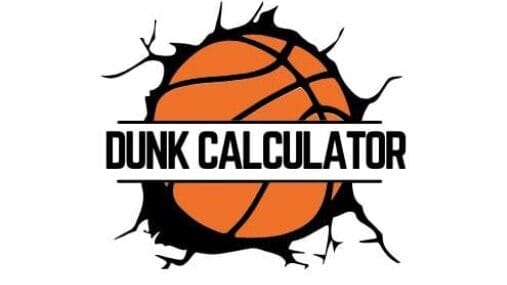Basketball training is the secret weapon behind every elite player’s success. Whether you’re just starting out or aiming for a college scholarship, a smart training plan can make all the difference. It’s not just about playing more games it’s about developing key basketball skills, building explosive strength, and training your mind for high-pressure moments.
With the right mix of basketball workout plans, game-like basketball drills, and basketball player conditioning, you can elevate your performance and outshine your competition. This guide breaks down everything you need, from warm-ups to advanced tools, helping you train smarter. Basketball skill development starts here—with discipline, science, and passion combined.
Why Basketball Training Matters
Basketball is more than a game. It’s a test of speed, strength, skill, and smart decisions. Every athlete, no matter their level, must train hard and smart. Youth basketball development starts early and sets the stage for future success. If you’re serious, your training needs to match your goals.
Basketball training that boosts speed, agility, and stamina helps you perform better on the court. It builds your body and sharpens your mind. The right program improves confidence, shooting, passing, and defense. Without it, your game stays stuck. To grow, you must train like champions do.
Core Components of Effective Basketball Training
Functional basketball drills that build game-ready athletes cover many areas. You must improve shooting, ball-handling, passing, defense, and movement. Basketball skill development needs a full approach. Skip one part, and you fall behind. Each element builds your complete game.
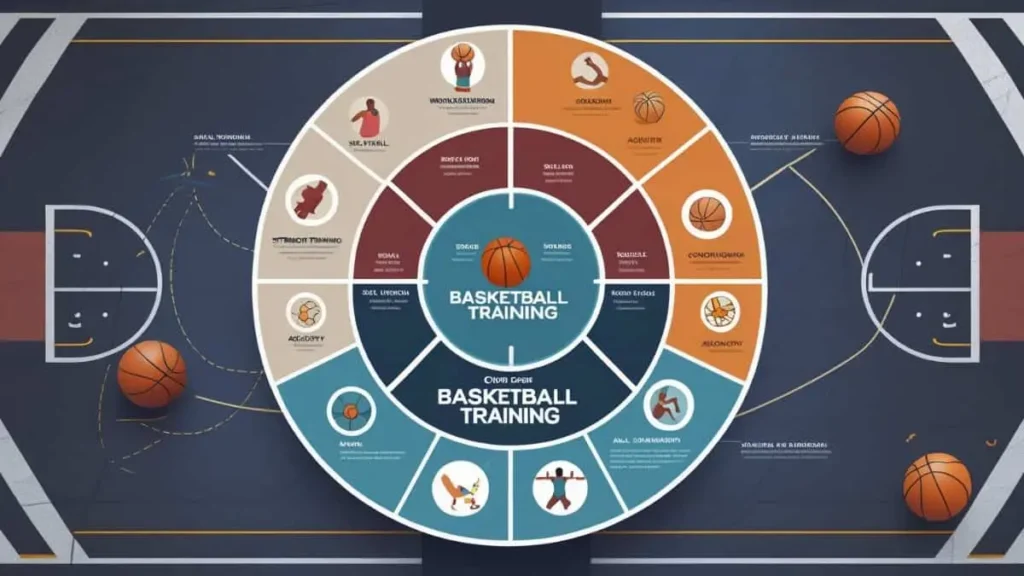
You need drills that push you. Drills that simulate game intensity and real match conditions prepare your body and brain. Training should feel like a real game. It must be hard, focused, and timed. Add competition to build mental toughness.
Basketball Drills by Category (150+ Total Drills)
There are hundreds of ways to train. Here are the core drill types:
| Drill Type | Number of Drills |
|---|---|
| Shooting drills for players | 27 |
| Game-like basketball drills | 18 |
| Layups & finishing | 20 |
| Basketball player conditioning | 13 |
| Basketball speed and agility drills | 15 |
| Ball-handling workouts | 20 |
| Warm-up exercises for basketball | 9 |
| Core training for basketball | 13 |
| Basketball plyometric exercises | 13 |
| Individual basketball drills | 12 |
| Partner basketball exercises | 9 |
| Basketball strength training | 15 |
| Basketball fitness workouts | 13 |
Each drill type targets a different skill or muscle. You’ll build strength, stamina, and court smarts. Train like professional athletes using proven techniques and focus on each category weekly.
6-Week Basketball Training Program
A 6-week plan is a great way to level up fast. Start slow, then increase intensity each week. Week one builds your base. Week two adds strength. By week six, you’re doing high-intensity basketball circuits to mimic in-game fatigue.
In this plan, you’ll train five days a week. Use basketball practice routines that work on full-body fitness, skills, and recovery. This keeps you from burning out. It also boosts basketball aerobic capacity and VO2 Max basketball performance. Focus each day on one area: shooting, agility, strength, skills, or recovery.
Comprehensive Workouts for All-Around Development
A strong basketball player must train from head to toe. That’s where full-body basketball workout plans shine. You work on your legs, arms, core, and mind in one session. Combine basketball plyometric exercises with reaction drills to prepare for real games.
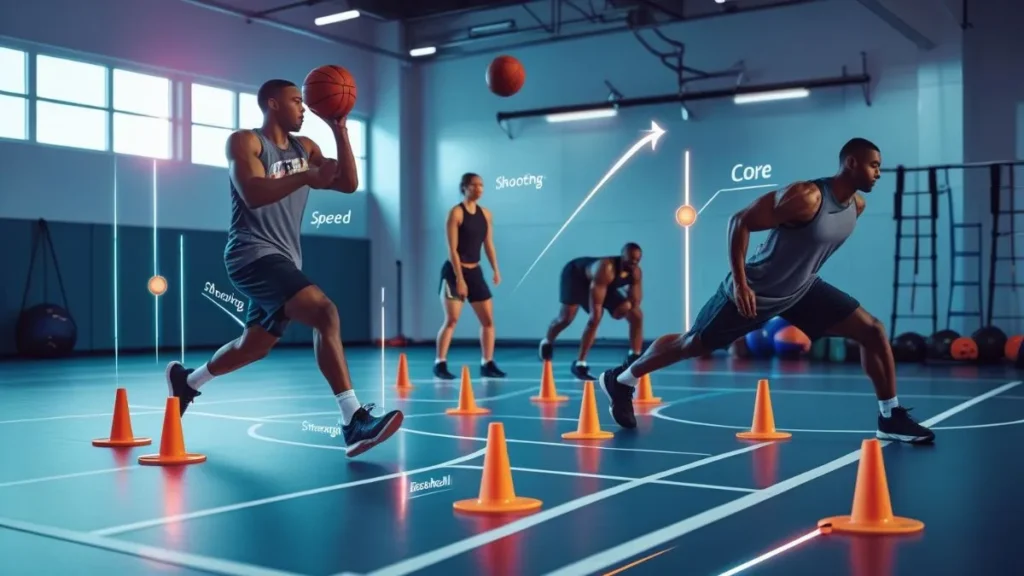
Use basketball workout plans designed to develop speed, strength, and court movement. These plans focus on both skills and endurance. Mix in rest and review to fix weak spots. This helps you train smart, not just hard.
Solo vs Partner Training Drills
Master basketball fundamentals with solo and partner drills that suit your setup. If you train alone, work on ball-handling workouts, footwork, and shooting form. Add cones or markers to act like defenders.
If you have a partner, use partner basketball exercises that challenge you both. Practice defense, passing, and reaction. Training with someone builds your rhythm and decision-making. It’s also more fun.
Daily & Weekly Basketball Training Schedule
Here’s a sample training schedule that you can follow each week:
| Day | Focus Area |
|---|---|
| Monday | Shooting + Agility |
| Tuesday | Ball Handling + Defense |
| Wednesday | Strength + Plyometrics |
| Thursday | Core + Vertical jump training |
| Friday | Game-like Drills + Endurance |
| Saturday | Light Recovery + Flexibility |
| Sunday | Rest / Active Recovery |
Each day hits a different focus. This builds balance and reduces injury. Sport-specific training plans for guards, forwards, and centers may adjust based on position needs.
Physical Conditioning for Explosive Performance
To improve performance, you must add explosive basketball movement training. That means sprints, cuts, and jumps. It also means lifting smart. Use functional strength for athletes with movements like squats, lunges, and pushups.
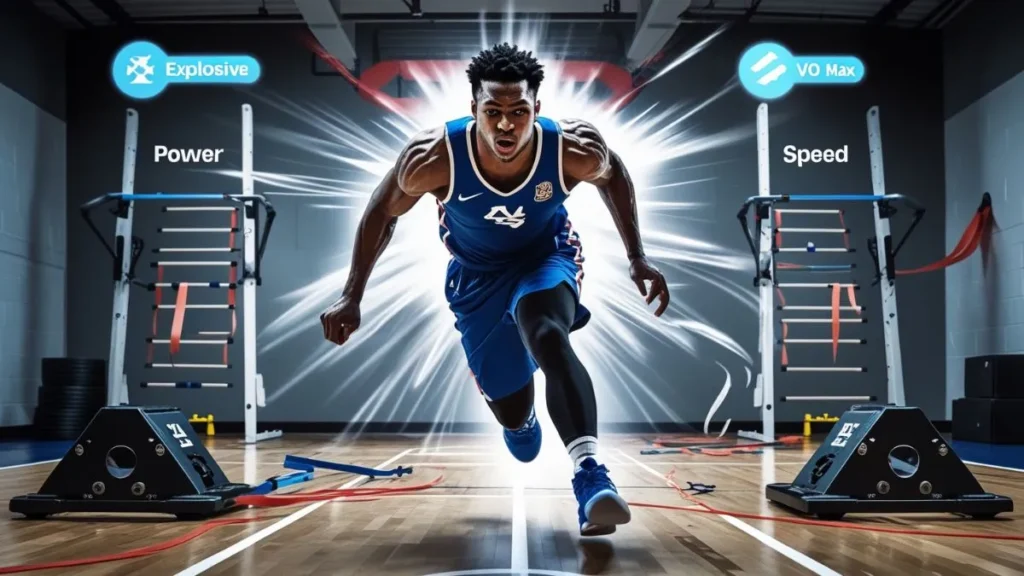
Strength helps you box out, drive hard, and defend tough. Add in basketball strength training three times a week. Mix in recovery and stretching too. Don’t forget your legs — strong legs mean power and speed.
Vertical Jump Workouts
A high vertical jump is a game-changer. Use vertical jump training basketball plans to increase it. These include box jumps, depth jumps, and resistance jumps. Combine them with core training for basketball for better balance and takeoff.
Don’t do jump training every day. Space it out. Mix with basketball plyometric exercises and strength lifts. You’ll rise higher and land safer.
Core & Strength Training Routines
Your core is your engine. Strong core muscles help with every move you make. Use planks, leg raises, and medicine ball throws for core training for basketball. Add strength drills like deadlifts and presses.
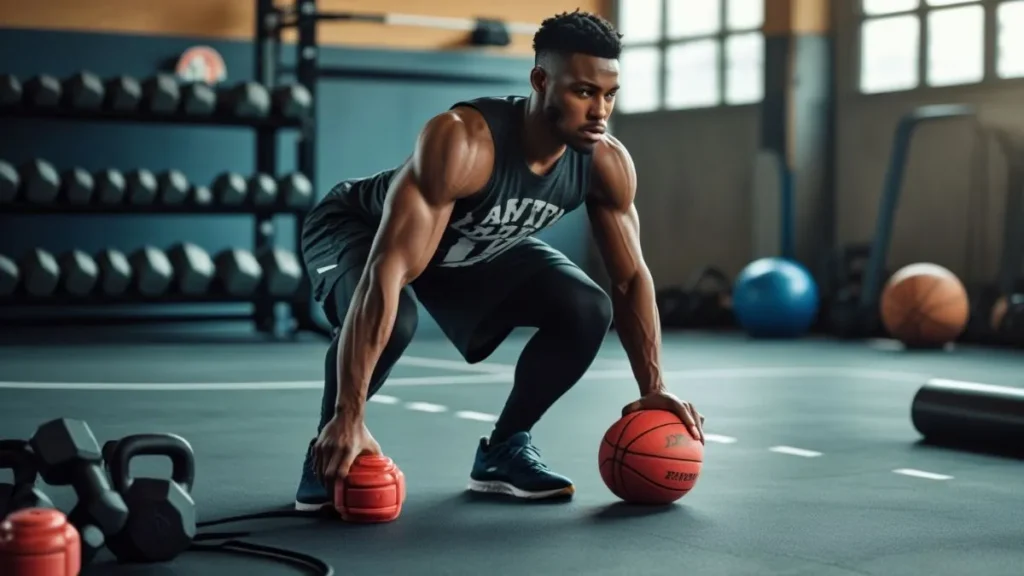
This routine builds body control. It also supports your spine. That means fewer injuries and better results. Pair this with basketball fitness workouts for a complete system.
Incline Treadmill Training (Use with Calculator)
Running on an incline boosts your endurance fast. It mimics game speed and helps your legs push harder. Use your VO2 Max basketball calculator to set the right pace.
Train for 15–30 minutes. Keep your form strong. Rest between sets if needed. This builds cardio and strength in one go. It’s perfect for the offseason.
Tools to Track Progress & Optimize Training
To train smart, you must track your progress. Use these free calculators:
| Tool Name | Benefit |
|---|---|
| Dunk Calculator | Find out if you can dunk and how to reach that goal |
| Vertical Jump Calculator | Measure gains in inches over time |
| Standing Reach Calculator | Learn your potential for rim touches |
| Dunk Rating Tool | Rate your dunk skill from 1 to 10 |
These tools help you plan and adjust your basketball conditioning programs tailored for all levels.
Basketball Rim Heights – Know What You Are Aiming For
Not all hoops are the same. Here are standard rim heights in the USA:
| Level | Rim Height |
|---|---|
| Youth (ages 6–8) | 8 feet |
| Middle School (ages 9–11) | 9 feet |
| High School & Up | 10 feet (official) |
Knowing this helps set the right goals for position-specific basketball training and dunk attempts. Don’t rush the height—build strength and control first.
Common Mistakes That Limit Player Progress
Many players fail because they skip warm-ups or overtrain. Avoid doing too much, too soon. Don’t copy others without a plan. Always include warm-up exercises for basketball before hard drills.
Track what works. Adjust what doesn’t. Use train smarter with evidence-backed basketball workouts. Mistakes are fine, but learning from them is key.
Final Thoughts – Become the Best Player on the Court
To be great, you must train smart and hard. Use basketball training programs supported by sports science. Focus on skills, strength, stamina, and mindset. Don’t quit when it’s hard. Keep moving. Keep growing.
Start today with the tools on our site. Improve your basketball performance with structured training drills. You can be the best if you work for it. The game is waiting. Go get it.
Frequently Asked Questions about Basketball Training
How do you train for basketball?
Train by combining skill drills, strength workouts, agility training, and game-like practice sessions.
What type of training is best for basketball?
The best training includes a mix of basketball skill development, conditioning, and functional strength exercises.
What is the best workout for basketball?
A full-body workout with plyometrics, core training, and shooting drills for players is highly effective.
What are the top 5 skills in basketball?
Dribbling, shooting, passing, defense, and court awareness are the five key skills.
How to chest pass in basketball?
Hold the ball with both hands at chest level and push it straight forward using your thumbs and arms.
Are basketball players strong?
Yes, they develop functional strength for athletes through basketball strength training and resistance workouts.
